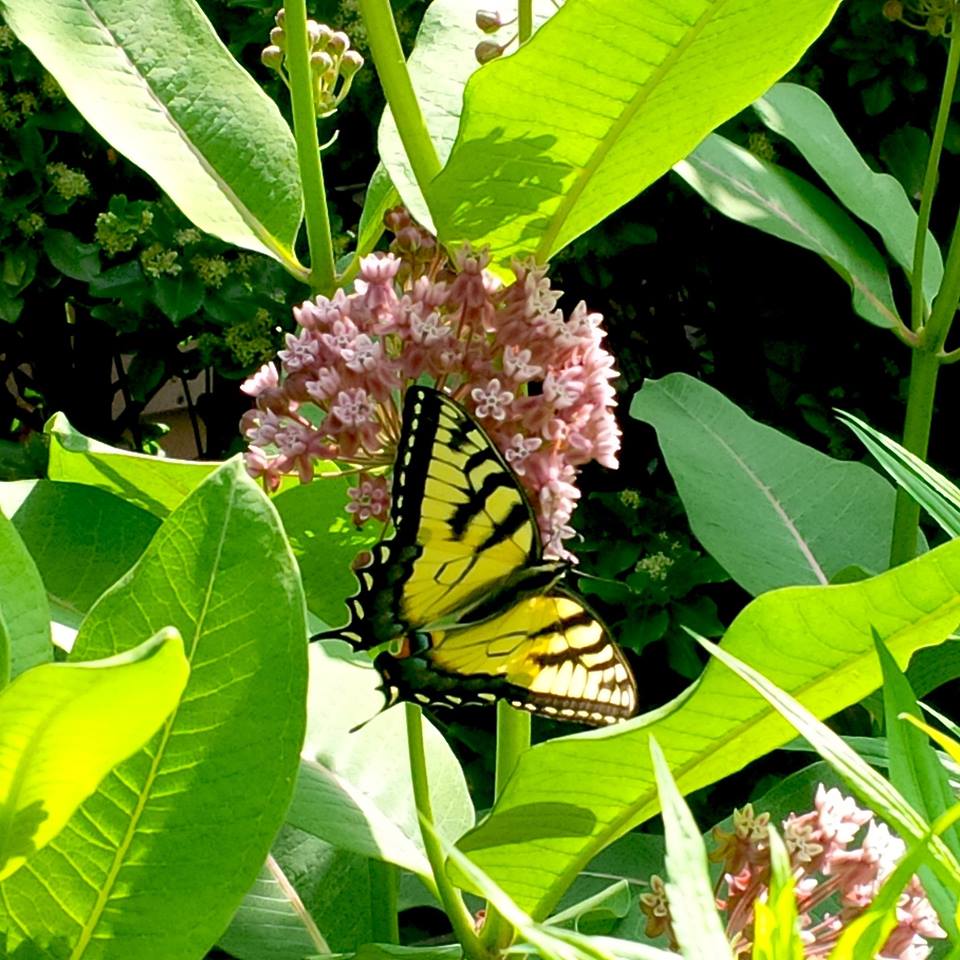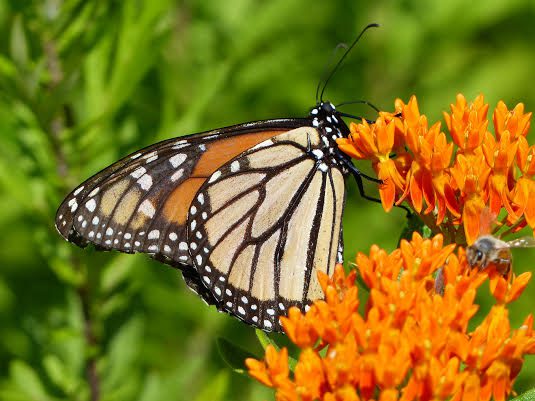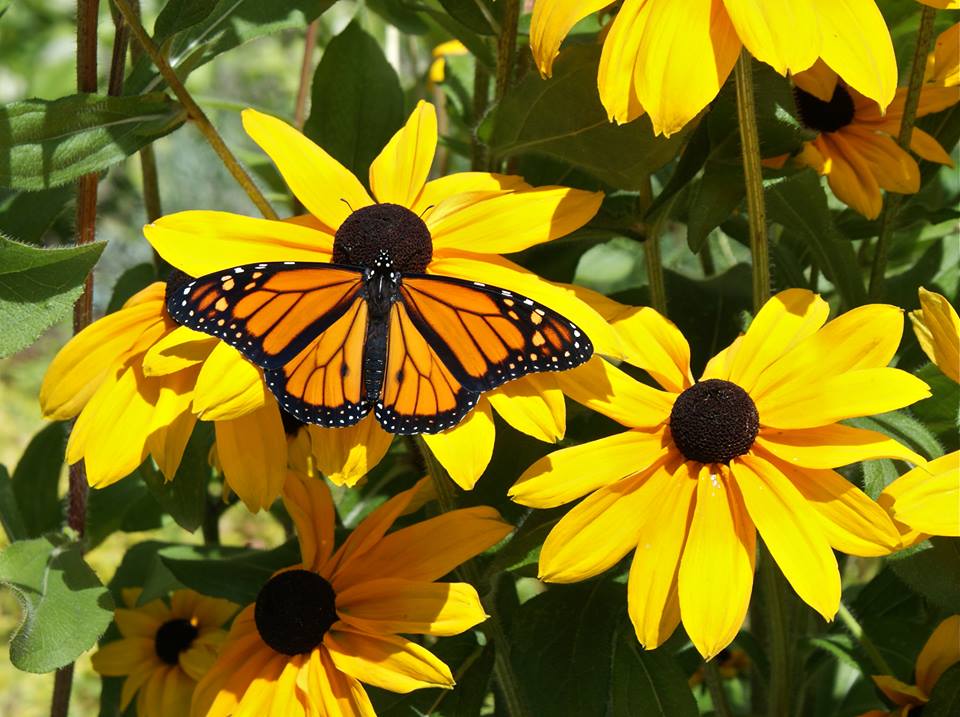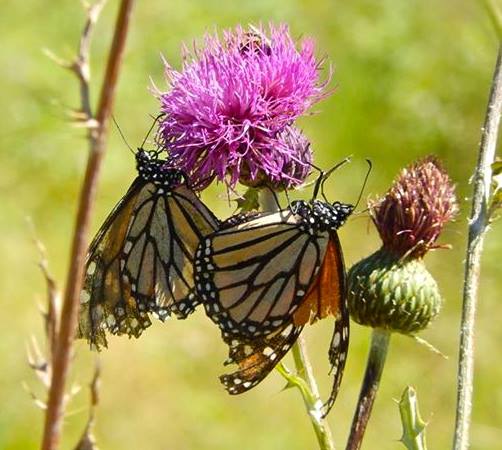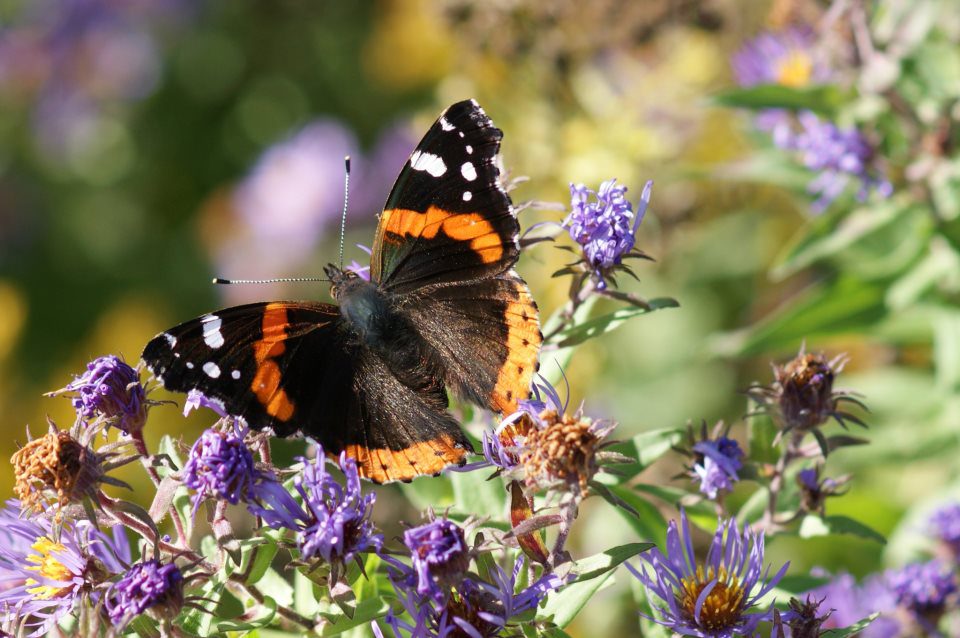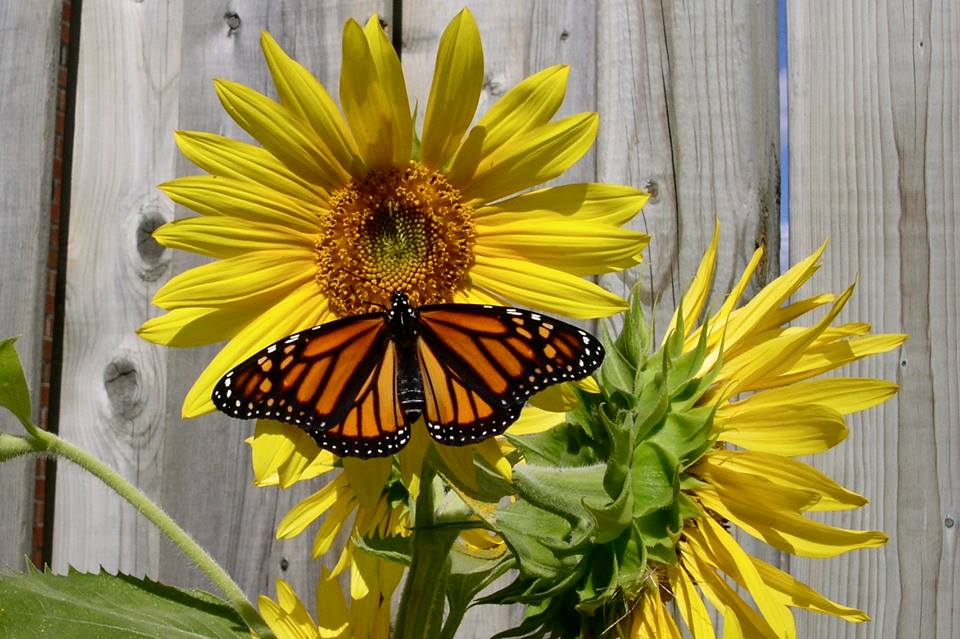Send us your Monarch Habitat and We’ll Post It
Creating Monarch Habitats
Monarch butterflies are threatened with extinction by a number of factors including the increasing loss of milkweeds and habitats, the use of pesticides, and climate change. Endeavors in conservation to help protect monarch populations can start in your backyard by planting milkweed, nectar plants, or a garden.
Monarch habitats support a diversity of wildlife including many species of butterflies, bees, dragonflies, migratory birds, and native plants. Like oases, these habitats serve as connections or steppingstones linking populations of Monarch butterflies and other wildlife over the course of their life cycles and migratory cycle.
Monarchs rely on a particular type of host plant, milkweed, for their larval stage (caterpillars) to eat and complete their life cycle. Species of milkweed local to the NYC area and commonly planted include common milkweed (Asclepias syriaca), butterflyweed (Asclepias tuberosa), and swamp milkweed (Asclepias incarnata). In addition to milkweed, Monarchs need nectar plants to help fuel their reproduction and annual migration from Mexico to the northern North America.
Planting Ahead: Choosing a Place
Whether a road-side, backyard, or planter, monarch butterflies have an incrediable honing ability to find even a small oasis of milkweed in the middle of a densely urbanized area. Even in difficult areas where planting areas are lacking or sorely limited, milkweed grown in containers will still attract Monarchs.
The ideal sites for monarch habitat are those that have full sun and a windbreak. This is because milkweeds do best in sunny spots, Monarchs need warmth from the sun to remain active, and Monarchs prefer to feed in areas sheltered from the wind. A wind-break could be a fence, a wall, or a planted shrub.
When it comes to soils, common milkweed (Asclepias syriaca) does best in well-drained soils and it is a hardy species that can thrive in a wide range of soil conditions and out-compete invasive plants. It is often found growing wild on road-sides, fringe areas around public parks, and in meadows. Butterflyweed (Asclepias tuberosa) is a beautiful, highly showy species that does well in similar conditions. Swamp milkweed (Asclepias incarnata) is one species in our area that does well in wet soils.
Finding and Preparing Milkweed Seeds and Cuttings
Milkweed seeds can be planted outdoors or started indoors and then transplanted. A limited number of milkweed seeds and cuttings are available free from the Metropolitan Monarch Alliance’s partners starting in 2016. Contact David Jakim at David.Jakim@qc.cuny.edu for more information.
Seeds need to stratified – that is that they need to be placed in a cold, moist place for about three to four weeks before they will germinate. To do this, either place them in moist paper towels in a plastic bag in the fridge, or in cold, moist, potting soil. For a highly detailed account on this subject, see Monarch Watch’s Guide to Growing Milkweeds.
Preparing the Soil
If planting milkweeds by seed, prepare the soil by removing lawn or other plant cover and raking the soil. Additional soil can be brought in as needed. Fertilizing with half-strength fertilizer after the plants emerge will fortify their health.
Planting
After the last frost, plant the seeds very shallowly into the soil with a little bit of the seed visible above the soil surface (this is important as the seeds need light to germinate). Do not keep the seeds too moist to prevent them from rotting. Fertilize with half-strength fertilizer after the seedlings spring up.
If starting seeds from indoors, allow them to grow 3-6 inches in height before transplanting – this should take 4-8 weeks.
Maintenance
Once planted, water milkweeds until they are well established. Once established, milkweeds need no further watering. Weed by hand as necessary. Avoid the use of pesticides as they may be harmful or lethal to Monarch butterflies and other wildlife.
Choosing Pollinator Plants and Gardening for Biodiversity
If you are creating a garden for pollinators such as other butterflies, bees, and hummingbirds, native plants, or other wildlife, consider adding local nectar plants that bloom at different times of the year. Gardening with NYC Native Plants is a great introduction to gardening with native suggestions for NYC’s varied habitat types. The XERCES Society for Invertebrate Conservation has a list of plants for the new york region: Pollinator Plants of the Northeast Region. For school-gardens, see this great guide by Monarch Joint Venture: Schoolyard Butterfly Gardens.


